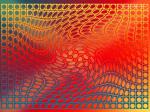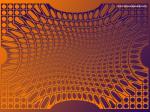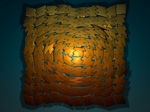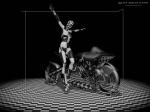
Show · Hide
This is an archive of my most exciting experiments Made in 1996. At that time, I was beginning to study digital technologies, which were the steps of my growth and maturation. I decided to include this series of archival projects in the gallery of my artwork. They have been posted on some websites under various pseudonyms due to their uncomplicated and experimental nature. After some consideration, I've added these "relics" to my site for variety and teaching purposes. Toreador Dance, Art Trampoline, Conceptual Magic, Supernatural Vision, Spheroid Magnetism. - George Grie

















Digital Primitivism, educational exercise.
Show · Hide
I would call these works digital primitivism. This is an educational, trial construction of a three-dimensional composition. The main objective of the exercise was to complete a composition using a minimum set of visual means: light, form, texture, and content. This is a basic set of tools for learning digital graphics and design. They don’t carry any meaning, but it’s excellent training in technical skills when working with various programs. Each image has only three objects: a chessboard, a geometric floor plane, a female mannequin figure, and a third object (a car, a motorcycle, a mirror sphere, or an abstract spiral). In this case, the checkerboard floor serves as the basis for building the depth of the work, creating the illusion of three-dimensional space. It was interesting to model the surface of the background and three-dimensional objects, such as a car, using geometric camouflage. In all works, only one texture is used - a checkerboard surface and the effect of reflective lighting, black and white colors, and nothing else.











OP-ART The very first op art exhibitions attracted the attention of the general public. Many viewers felt that op art was the ideal art direction for the modern world with its new achievements in technology, psychology, medicine, digital and television technologies. The term "OP-ART" was first used by the artist and writer Donald Judd in a review of Julian Stanczyk's exhibition Optical Paintings. The new name quickly picked up. An article in the Times devoted to the same exhibition finally strengthened this visual art as a separate direction. The Neo-Surrealist Manifesto. George Grie 2009 |